A trailerable sailboat can be so much more than a daysailer. With a sense of adventure, a little thought, and a bit of gear, the same boat can beach-cruise far and wide for days, weeks, and even months on end. The capacity to cover great distances at highway speeds opens territory that the owners of large mooring-bound boats can only imagine wistfully as they spend the second half of each vacation returning to the same homeport.
Access to camping ashore is perhaps the trickiest element of beach cruising. Guerrilla camping may have its time and place, but I find I sleep a lot better knowing the caretaker or landowner isn’t on his way to roust me. The fact is that here in the East (my home grounds) we are blessed with many wonderful and legally accessible cruising grounds. Favorites I’ve sampled are the Maine Island Trail, Cape Lookout National Seashore, the Apostle Islands National Lakeshore, and Lake Champlain. Next up on my list are Florida Bay and the Keys and Lake Huron’s North Channel. I’ve not cruised the Pacific Northwest, but by its reputation I know that it presents a whole new world for exploration for me—as does Europe, too.
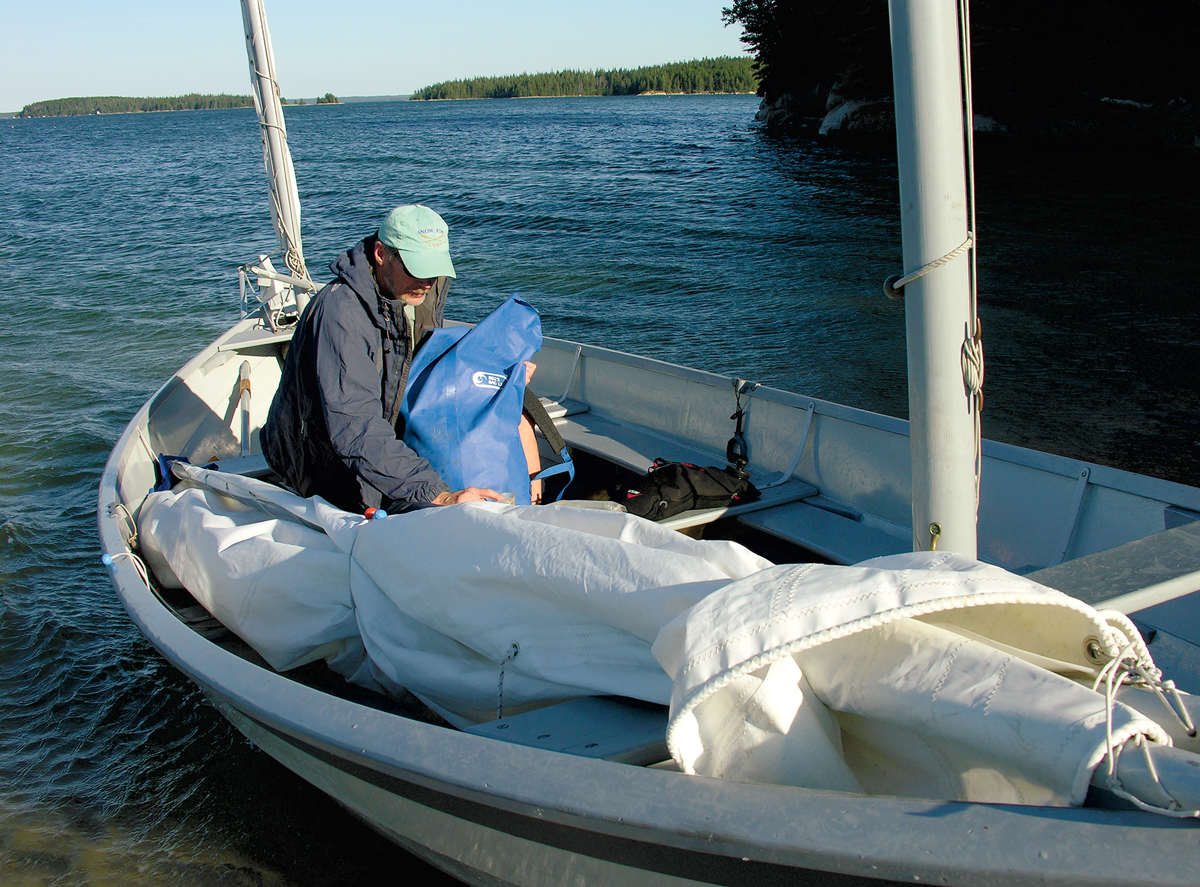 Photo by Matthew P. Murphy
Photo by Matthew P. MurphyHaving landed at the beach, author Geoff Kerr gathers his dry bags and prepares to unload his Caledonia yawl, NED LUDD, and set up camp.
Beach cruising can be likened to luxury kayaking, with room for more wine. It might also be compared with car-camping—though without the nocturnal door slamming in the campground. The range of suitable vessels is limited mostly by your imagination. With seaworthiness suitable to your chosen cruising area, the ability to carry a load of gear and companions, and a reliable rig, you are off. The necessary gear can be simple and inexpensive, and much of it is probably already in your garage. Issues that range beyond the scope of daysailing are finding your way, staying safe, staying warm and dry, eating and sleeping well, and taking care of the boat. The following photographs and ideas will help you with your fireside planning for next season’s adventures.
Gear and Stowing It
What to pack is somewhat a matter of boat size and of personal style. Gear can range from ultralight, minimalist backpacking equipment to luxurious and even sybaritic excess. There are some important principles to consider when loading the boat.
Remember that you must still be able to sail and handle the boat once loaded. You’ve got to be able to get to the pump and the anchor, and you must be able to reef and row. Remember too that boating is a water sport, and therefore wet. Pack in dry bags or lined duffels (contractor-grade trash bags are a wonder), so that at the end of a day of “yeeha!” sailing your panda-bear pajamas are still warm and fuzzy. More and smaller bags make stowing easier, and a large tote bag can make trips from the boat to the campsite more efficient. Plan on compartmentalizing your gear; specify a food bag, a galley bag, a bedding bag, and such. Once they are loaded aboard, bags should be strapped in to prevent shifting or loss in the event of misadventure; those loaded dry bags make for a heck of a lot of flotation should you experience what the emergency-management folks call a “flooding event.” Drinking water is often a logistical issue when saltwater cruising. Bring more than you think you need, and consider collapsible jugs or bladders so the empties are out of the way.
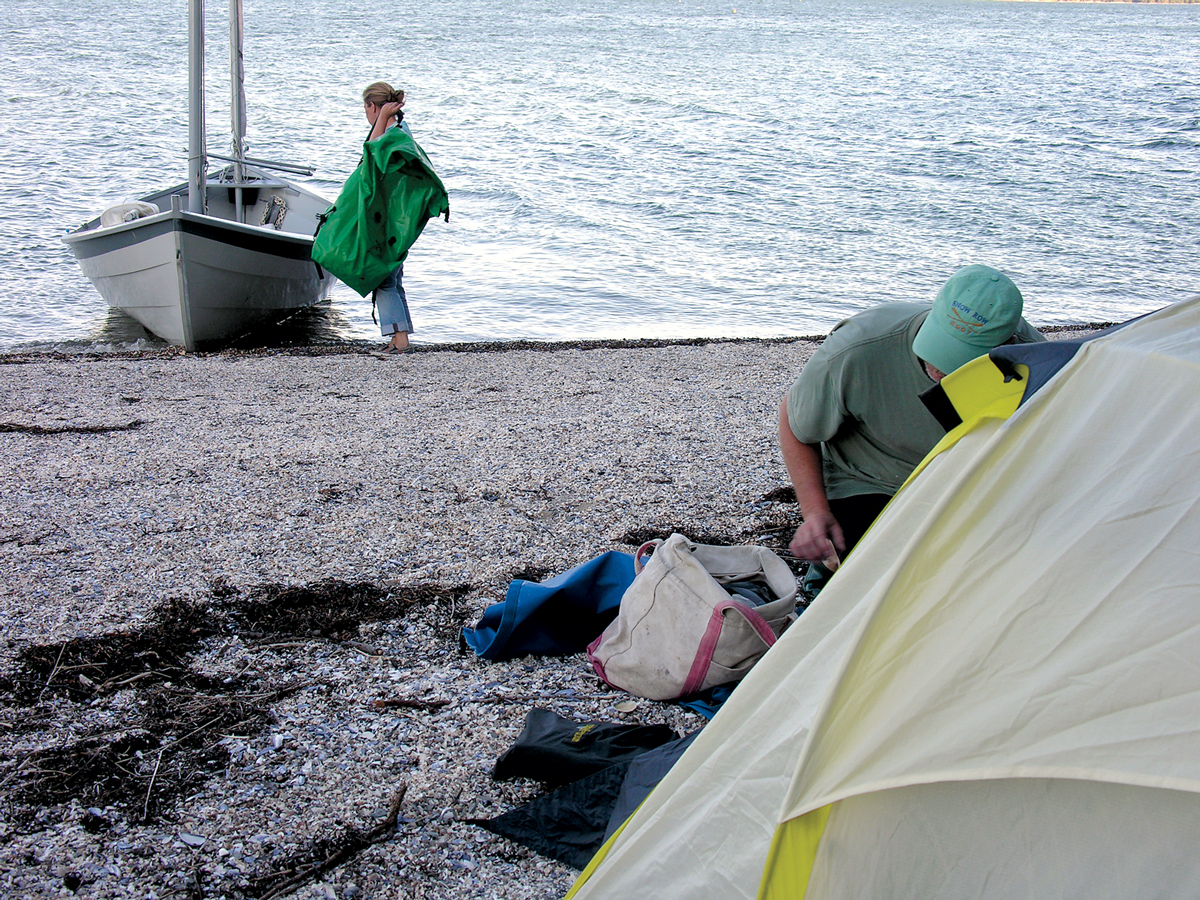 Photo by Matthew P. Murphy
Photo by Matthew P. MurphyOnce the boat is beached and the gear unloaded, beach camping is essentially the same as the woods variety.
Campsite
Once the boat is unloaded, camping is camping, and your favorite tent and sleeping bag, cooking gear, etc. will serve for beach cruising. Food tastes and styles are obviously personal issues. The biggest decision is probably whether or not to carry a cooler and try to manage chilled foods and ice. I find the cooler is the largest, heaviest, and most unyielding item in the boat, and usually make do with non-refrigerated provisions (just take more wine). Once that question is settled, take great food and eat well. Local customs should be acknowledged…carry a big pot, butter, and lemon and never miss a chance to pick up lobster, shrimp, or a freshly caught fish. It is also wise to have some ready-to-eat meals on hand in the event of a late arrival, foul weather, or bad luck with the local seafood.
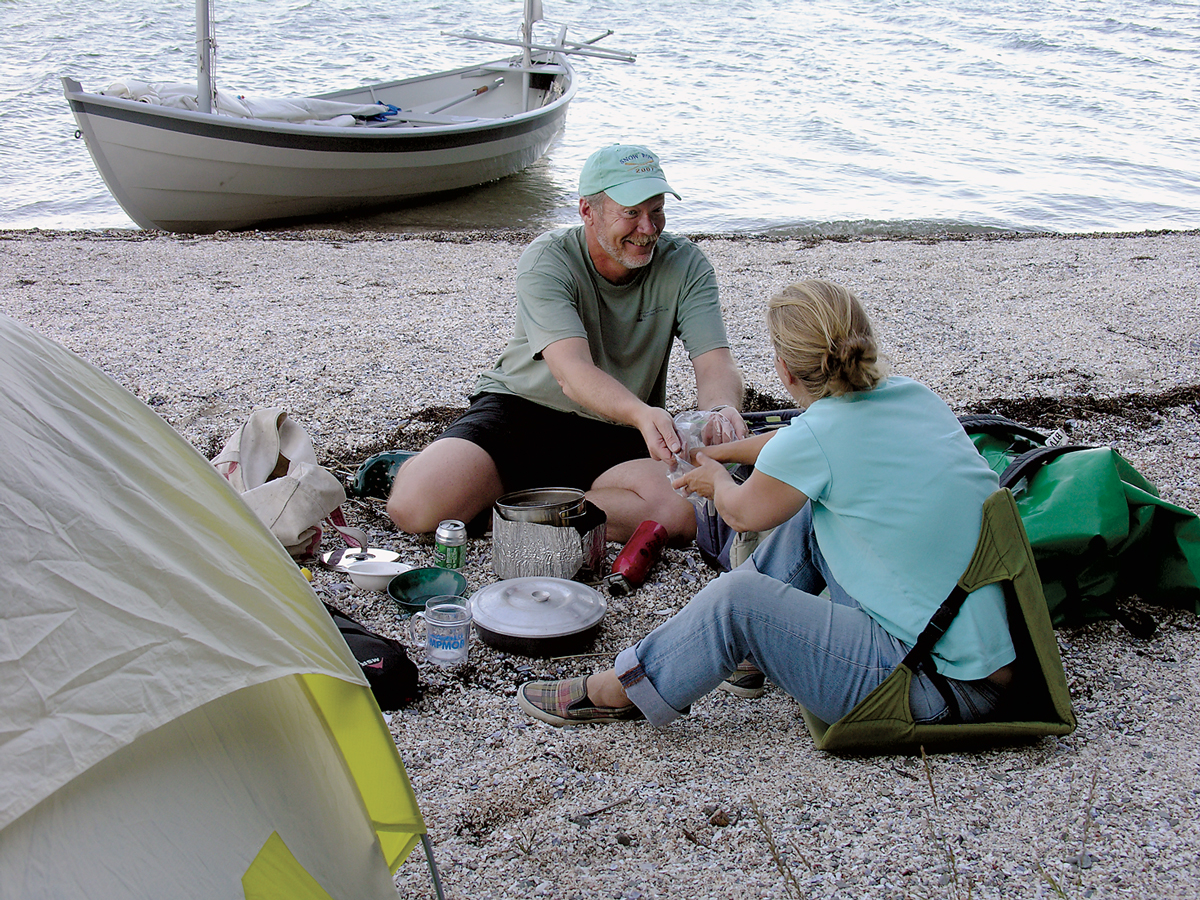 Photo by Matthew P. Murphy
Photo by Matthew P. MurphyGood cooking equipment and good food are essential to successful beach cruising. If you don’t want to carry an icebox, be sure to check out your local options—such as lobster in Maine or crabs on the Chesapeake.
When planning a trip, give due consideration to the local rules. Each island on the Maine Island Trail has specific considerations and designated tent sites. National Park Service properties often require permits and perhaps an itinerary or reservations. The no-fire rule is a pretty common concept these days, as is a pack-it-out policy for not only garbage but for personal waste as well. The MITA guidebook, for one, offers several strategies for solid-waste management that serve the small boater well. Their recommended system utilizing newspaper and zip-lock bags is handy, effective, and innocuous.
While doing your research, always consult with and buy into whatever local organizations hold sway in the area. It is often their efforts that have rendered the campsites accessible, and your meager membership fee will help feed an intern. Spend a dollar or two at the local kayak shop as well, and don’t be shy about asking for local secrets. Play by the rules and think well of the locals.
Beaching
What to do with the boat when you camp ashore is the overriding logistical challenge in beach cruising. Kayakers simply unload and carry the boat above the high tide line. Many small boaters with enough crew can do the same, and a boat high and dry makes for the best night’s sleep. Check and understand the tide tables and local evidence, and always secure the boat to a tree, boulder, or anchor. Wind changes, spring tides, and boat wakes have a way of moving any boat not actually in the woods. Larger boats or solo sailors may have to resort to some mechanical advantage. Boats have been moved on rollers for years now…you probably have them aboard in the form of fenders. Pump them up before setting off. When shorthanded, consider packing a come-along or handy-billy tackle. Moving the boat then becomes a rigging challenge rather than a physical ordeal, and merits a toast when accomplished.
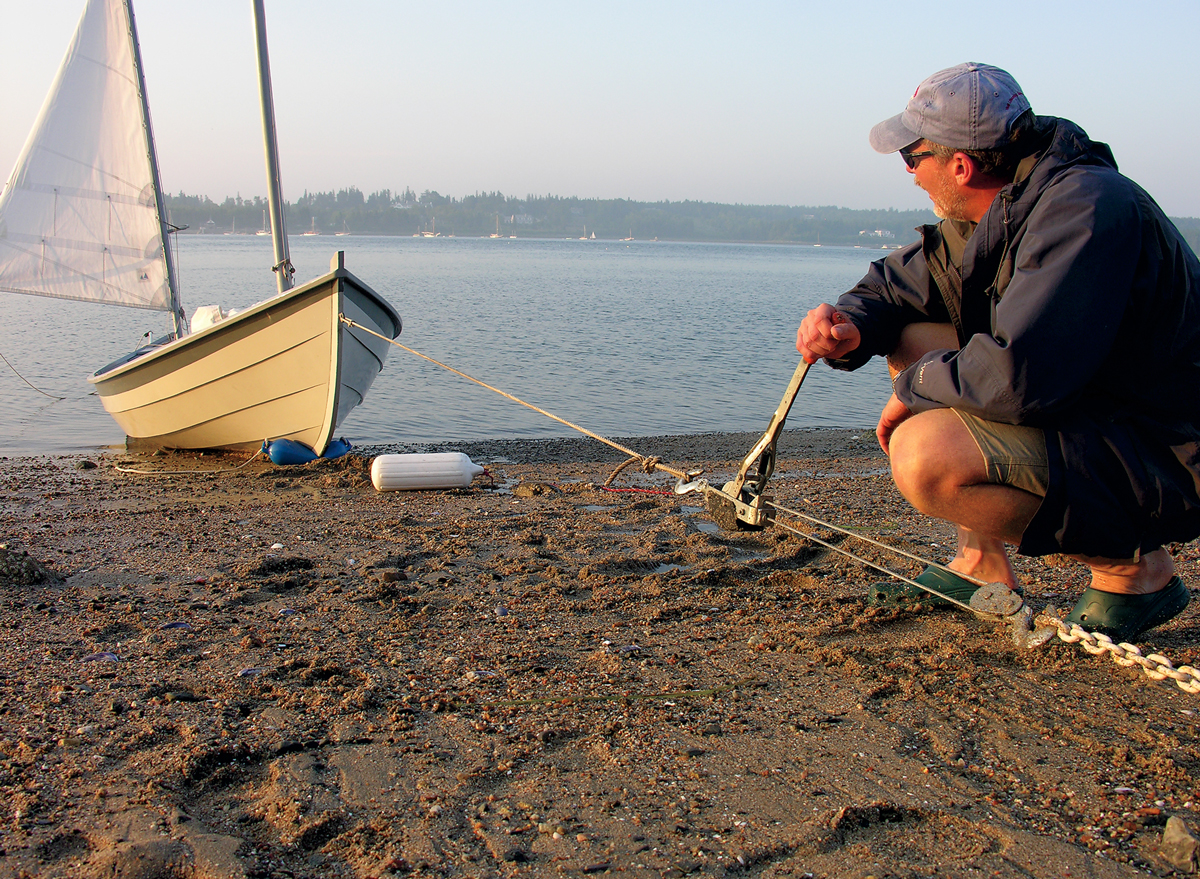 Photo by Matthew P. Murphy
Photo by Matthew P. MurphyIf you don’t intend to sleep aboard or use an outhaul anchor, then you must beach your boat above the tide’s reach. This can be done using brute force or mechanical advantage.
Anchoring
Beaching the boat may not be a reasonable option. The boat may be too heavy, or more likely the shore may be unsuitably steep, rocky, or exposed. Anchoring off is a time-honored strategy, and perhaps the simplest. The goal is to have the boat be there in the morning. Ground tackle is often a volatile issue, having spawned books and lawsuits and much marketing hyperbole. My rule is that no anchor ever dragged because it was too big. The 30-lb fisherman anchor pictured may look like Popeye’s salvage, but it held my boat through a hurricane on Cape Cod one summer, so I cherish it and sleep well when I use it. Whatever style anchors you carry (yes, I cruise with two, just like the big boys), be sure that they are rigged appropriately with shackles, long, heavy rodes, and chain as needed. (Please note that marketing claims often tout anchors as lightweight, without acknowledging that they may require more than their weight in chain to make them reliable. Choose wisely.)
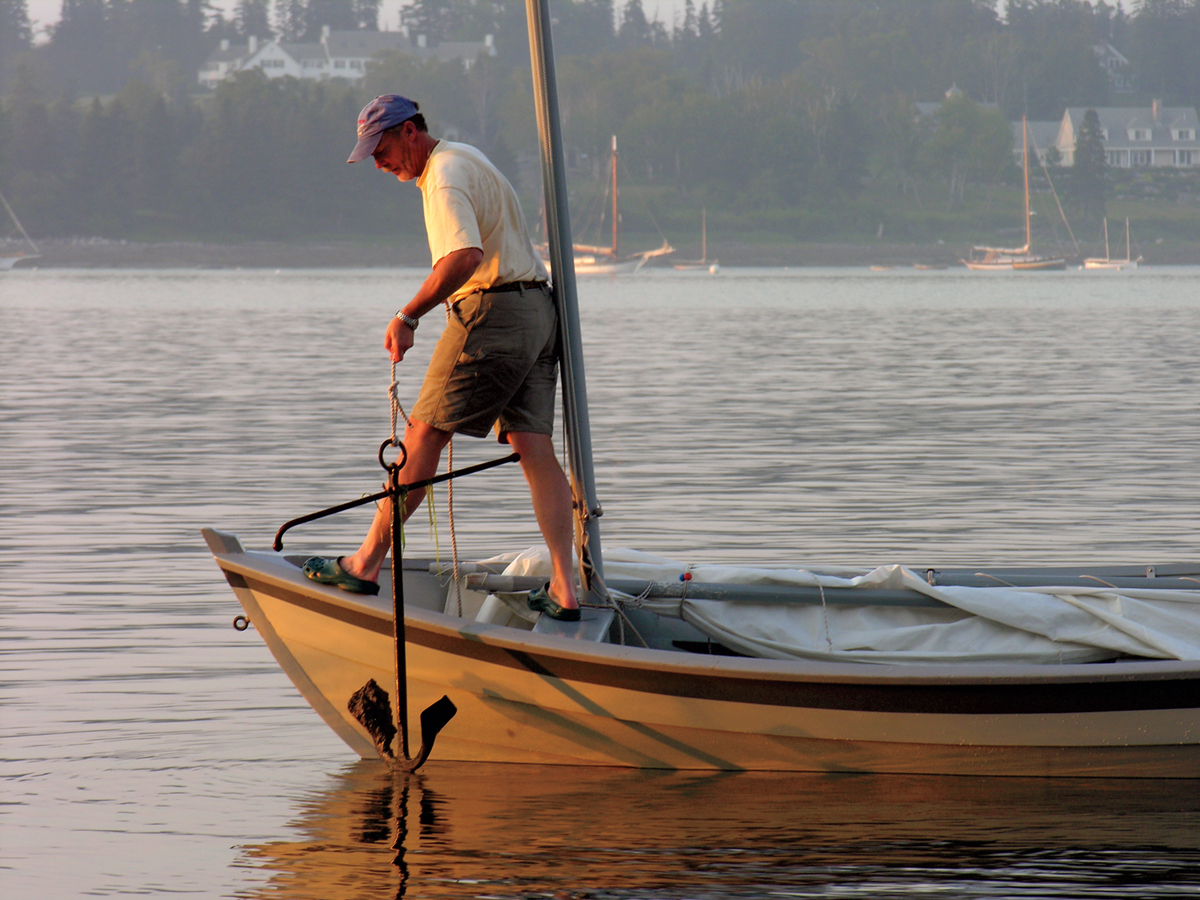 Photo by Matthew P. Murphy
Photo by Matthew P. Murphy“No anchor ever dragged because it was too big,” says the author. His 30-lb fisherman held his Caledonia yawl through a hurricane on Cape Cod. The anchor folds for easy stowage.
Stow your ground tackle in a manner that renders it immediately usable. I flake my long rode in a self-draining plastic laundry basket, making for a non-fouling easy-in/easy-out system. Mouse (wire) your shackles, double your knots, sound carefully, and set your anchor well. Also look around the boat and secure anything that might work or chafe or make noise in the night. My main-mast thumping in the partner has prompted a moonlight swim or two.
Note that working with heavy anchors in small boats does offer a few risks. Try to rig and handle ground tackle from amidships, keep yourself well inboard, rest loads on the rail to save your back, and learn not to mash your fingers. Never throw an anchor. You are not that strong, and others will laugh when you fall overboard. Besides, if you can throw your anchor, it is too small.
Finally…how to get ashore? In many civilized parts of the world, a quick dip will solve the problem very simply. In some areas with small tidal ranges you might even wade ashore. But, alas, the water is often cold and deep, and salt water leaves you sticky and makes for poor sleep. There is no reason that a beach cruiser can’t have a tender. Folk often utilize small kayaks, canoes, or dinghies. Our effort here towing a 7′ 6″ Nutshell with a Caledonia yawl was perfectly reasonable. I’d be more inclined, however, to include a good-quality, very small inflatable dinghy…somewhat above SpongeBob swimming-pool toy quality. Include a foot pump and a duffel bag, and you’ll have a reliable option without having to tow.
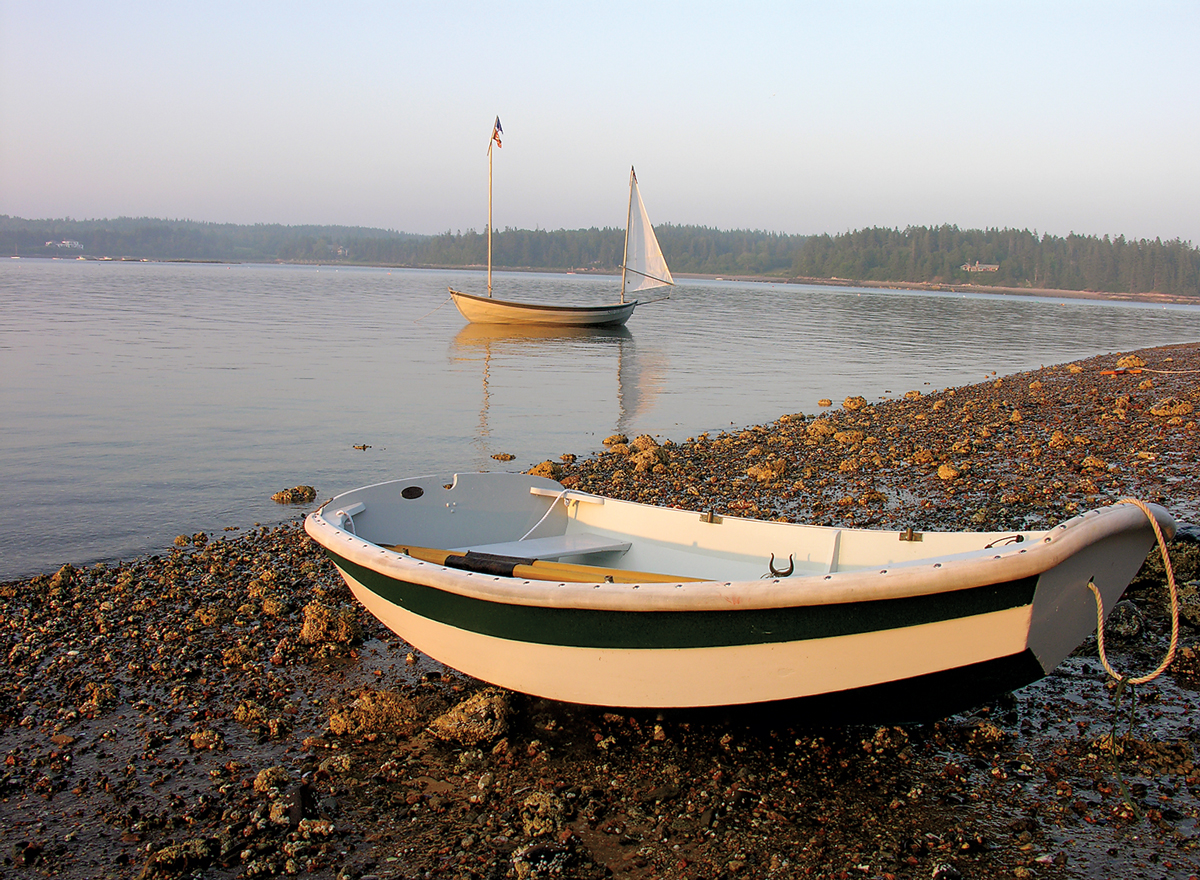 Photo by Matthew P. Murphy
Photo by Matthew P. MurphyIf you’re to anchor your boat and sleep ashore, you need a dinghy or (in cold waters) a strong constitution and a bathing suit. The small Nutshell pram ( 7′ 6″ ) shown here tows surprisingly well behind a Caledonia yawl, but a small inflatable raft would serve in a pinch—and it would stow aboard.
Sleeping Aboard
An important consideration in beach cruising is the capacity to sleep aboard in a pinch. Having this failsafe in your back pocket, even if it is not luxurious, can be a salvation in the event that you run out of daylight, have no shore access, or find your planned campsite overrun by hordes of jabbering middle schoolers. One of my recent excursions was a barrier-island cruise along a 40-mile stretch where day use was allowed but camping was prohibited. Sleeping aboard after a day of fishing and assorted other frivolity made a multi-day trip possible, and rendered me lord of all I surveyed each evening. Your accommodations can range from a simple tarp to a custom-fabricated tent, and this is a great do-it- yourself opportunity. Pack carefully and efficiently, and you can even cook and eat aboard relatively small boats. Less is more when living aboard. I just throw in the same bag of gear I use for kayaking or backpacking and hope for moderate weather.
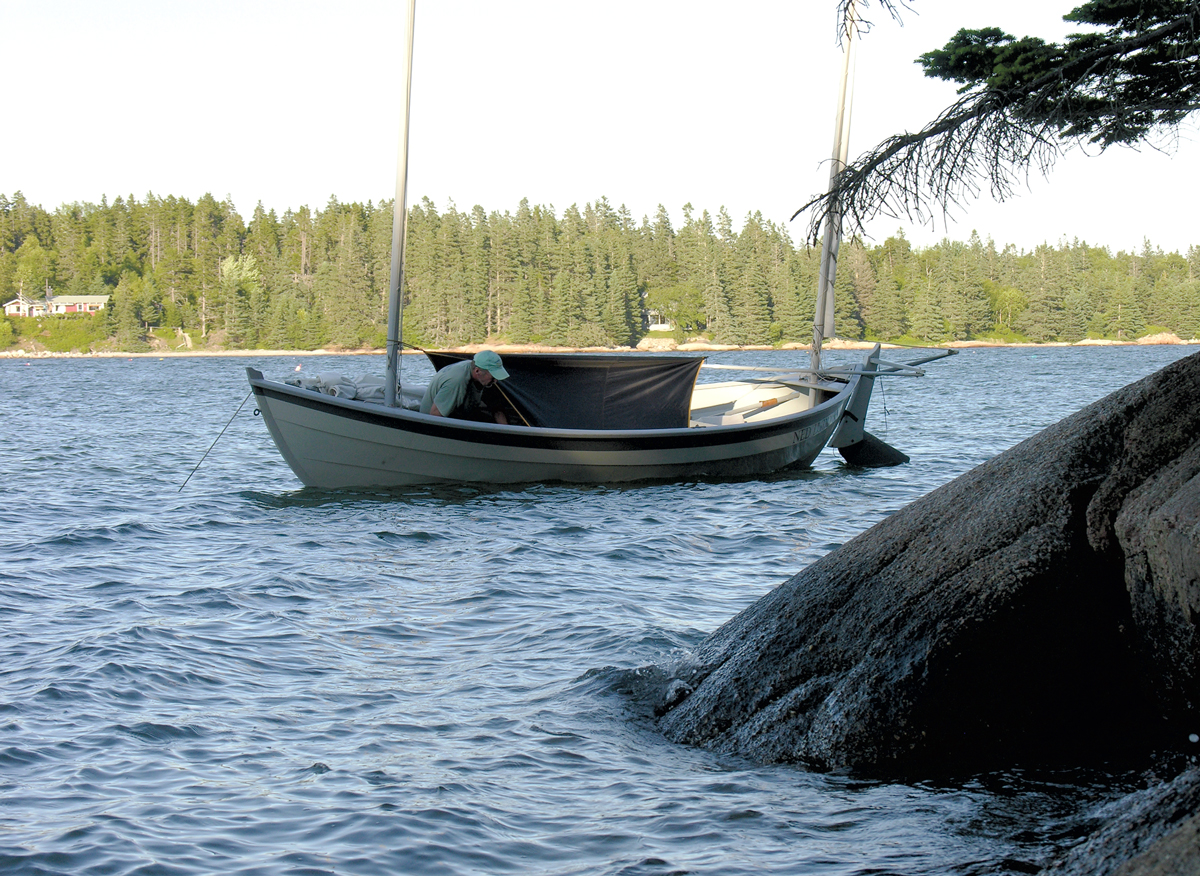 Photo by Matthew P. Murphy
Photo by Matthew P. MurphyA boat of appropriate size will accommodate its occupants for evenings aboard. A tarp will keep the dew off; a more elaborate tent will resist rain and bugs.
Haulout
A useful strategy that keeps the boat afloat and accessible and that doesn’t require a dinghy is to rig a haulout. It is especially handy where schedules and large tidal ranges combine to complicate departures. It does take some preparation and a bit of dedicated equipment, but nothing sophisticated or expensive. The top left photo demonstrates the essentials: a good anchor and rode, a haulout buoy, a seriously long haulout line (like 300+ feet), and a shore-end anchor.
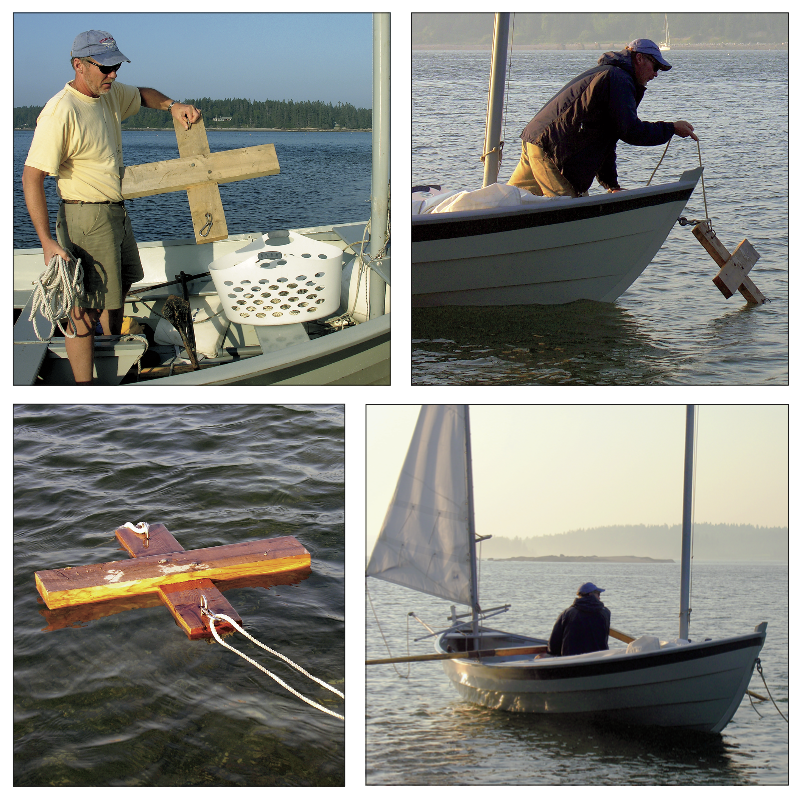 Photos by Matthew P. Murphy
Photos by Matthew P. MurphyA haulout, in proper conditions, is an ideal mechanism for getting your unoccupied boat to deep water for the night. The wooden cross in the photos is the mooring buoy; one side of it secures the anchor rode, the other side secures the boat’s long leash—the 300’ haulout line—which is secured to the bow in the bottom right photo.
Once camp is unloaded, the boat is rowed out to beyond the low-tide line, and the main anchor is set with the rode made off to the fixed side of the haulout buoy (top right). Then one end of the haulout line is shackled to the bow eye, and the line clipped into a carabiner or shackle on the running side of the buoy (lower left). The boat is then rowed back to shore, paying out the line cleanly from the basket as we go (lower right). Once ashore, the bitter end of the haulout is also shackled to the bow, forming a continuous loop, and the boat is hauled back out to the buoy. A shoreside terminus is chosen (an anchor, boulder, or tree), and at an appropriate position a quick figure eight in the bight of the haulout line gives you a loop to shackle or tie into to lock the system, and the boat, in the desired place. The photo at left shows the whole shebang in use at extreme low tide. At high tide or any intermediate state, we should be able to pull the boat in to our dry feet and mount up.
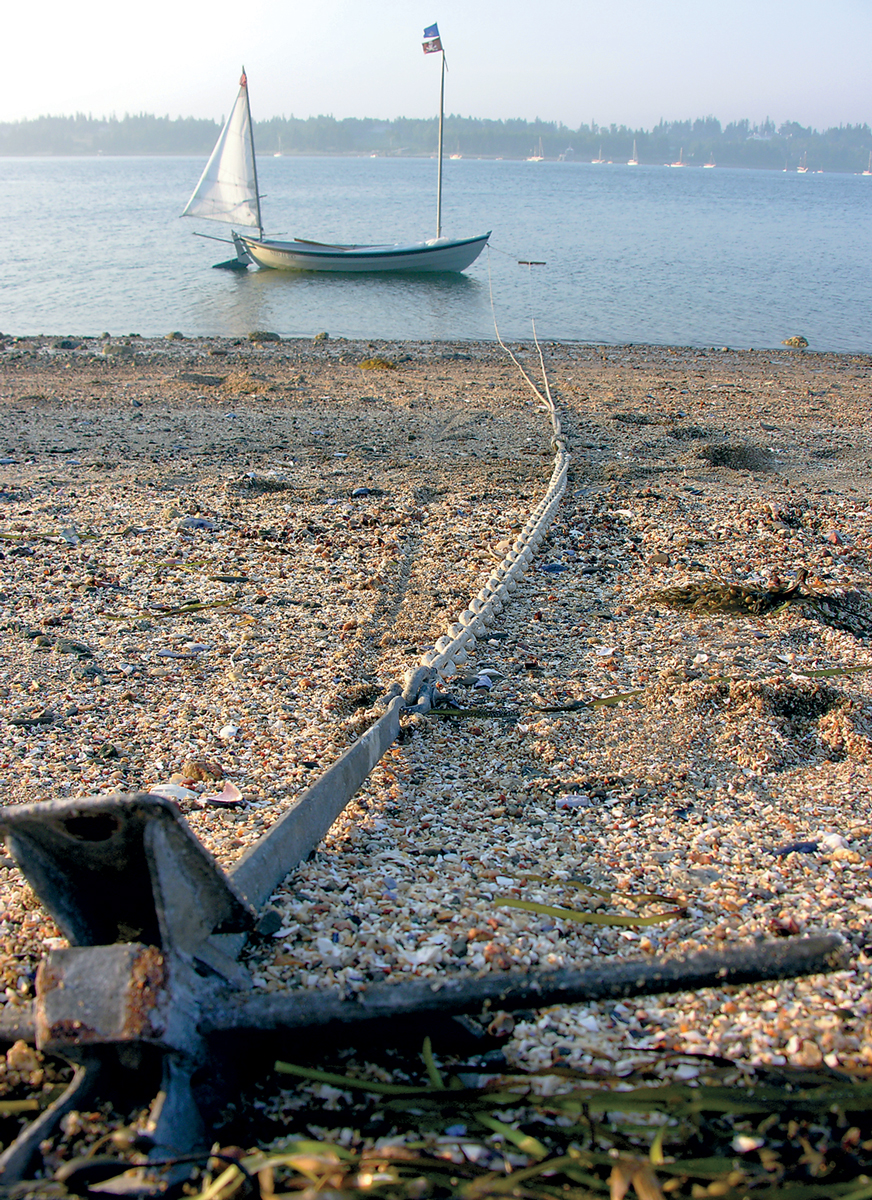 Photo by Matthew P. Murphy
Photo by Matthew P. MurphyThe whole shebang. The boat is riding on the fisherman anchor, which is underwater. The Danforth in the foreground secures the 300’ haulout line to the beach.
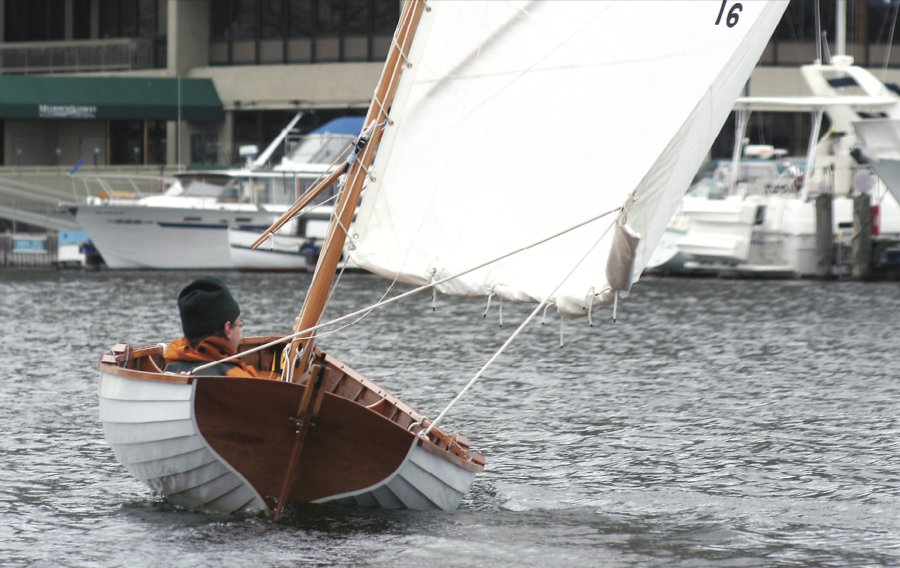
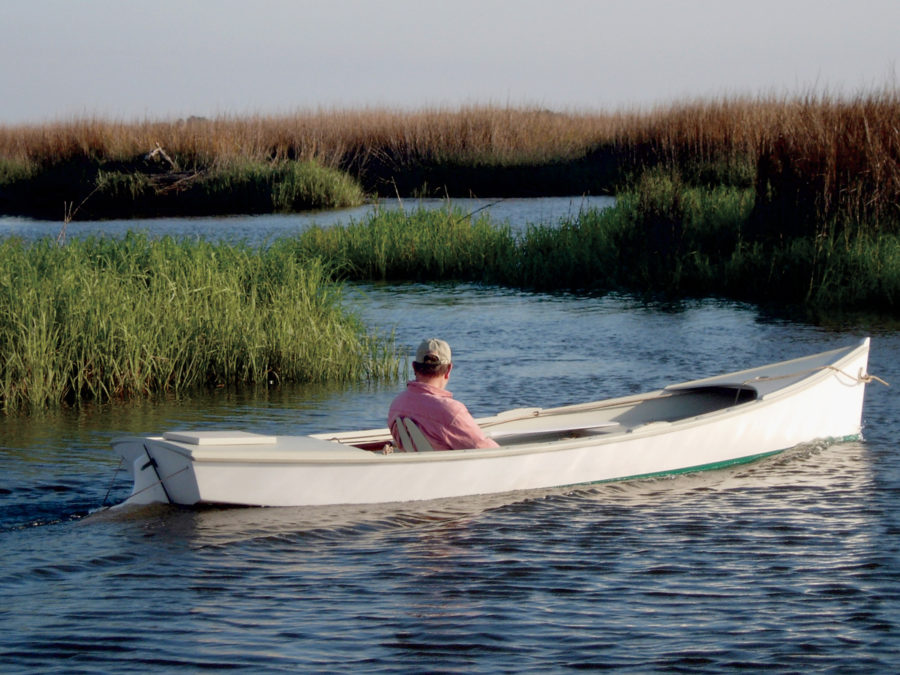
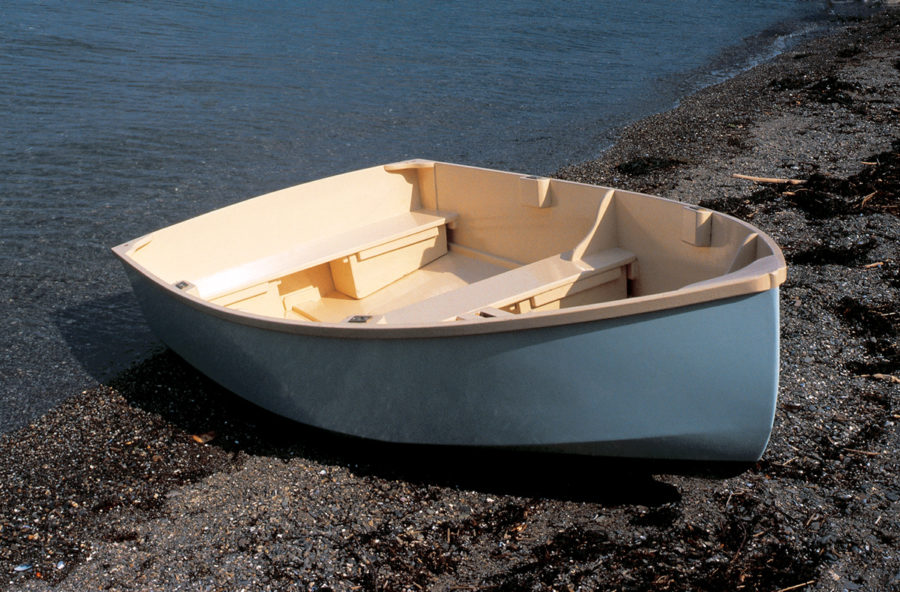

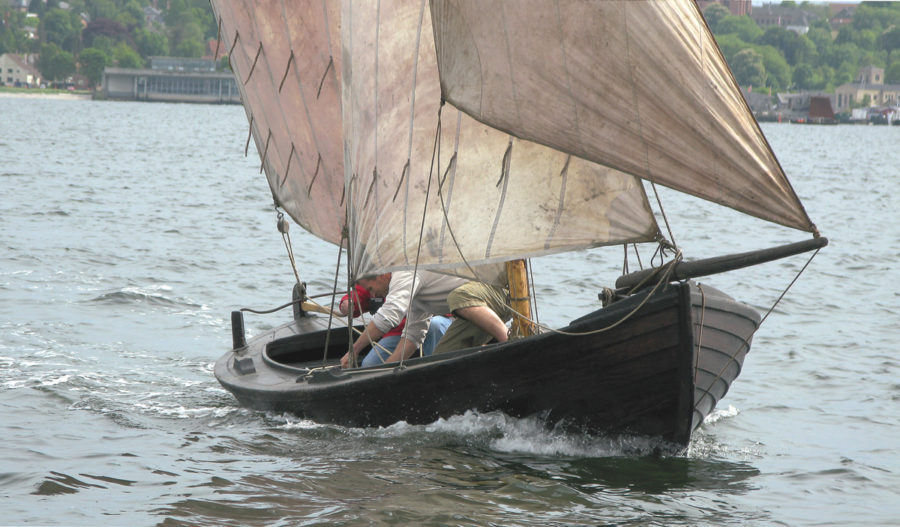
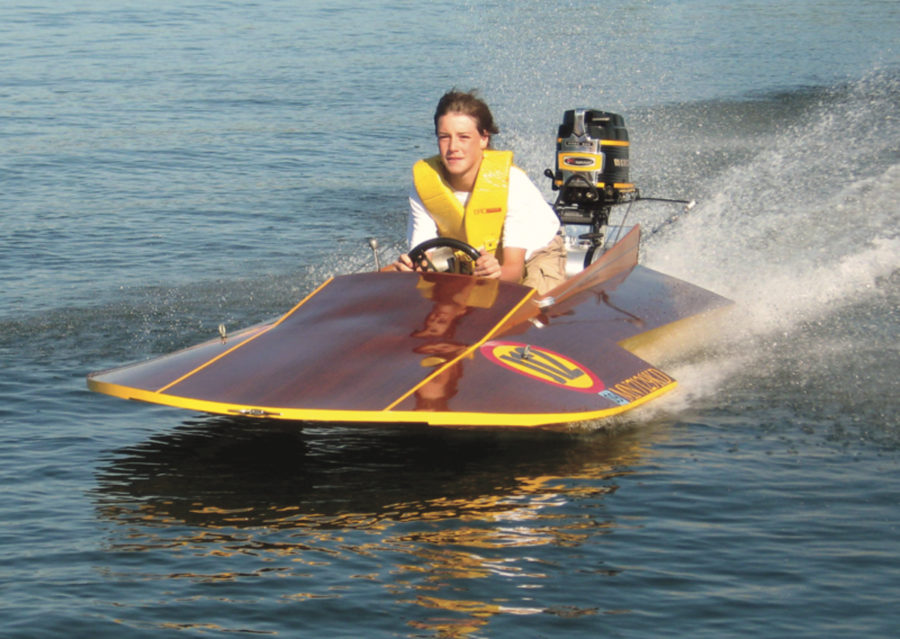
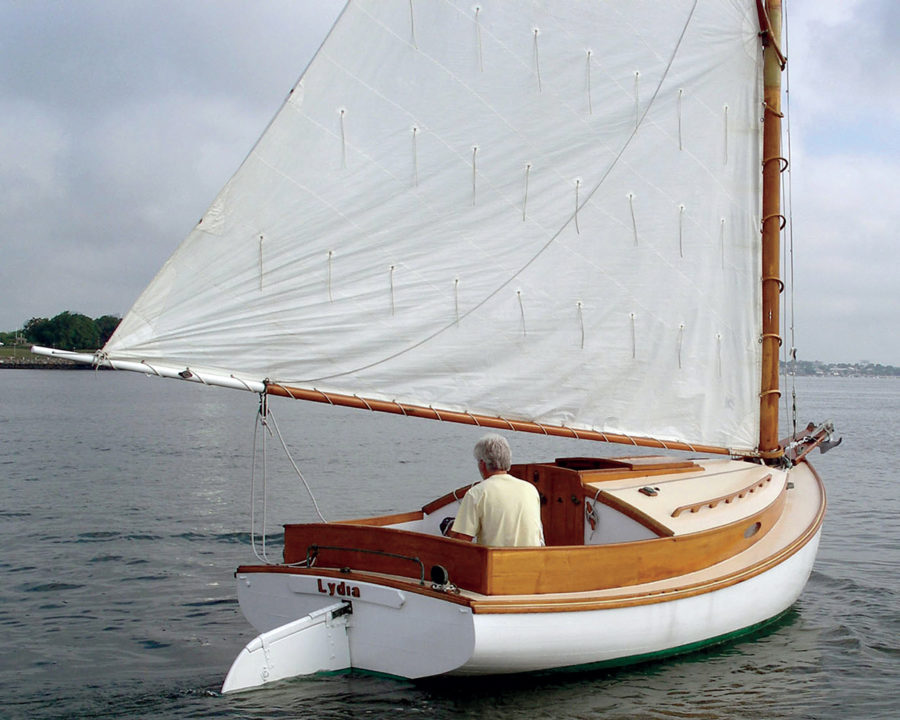
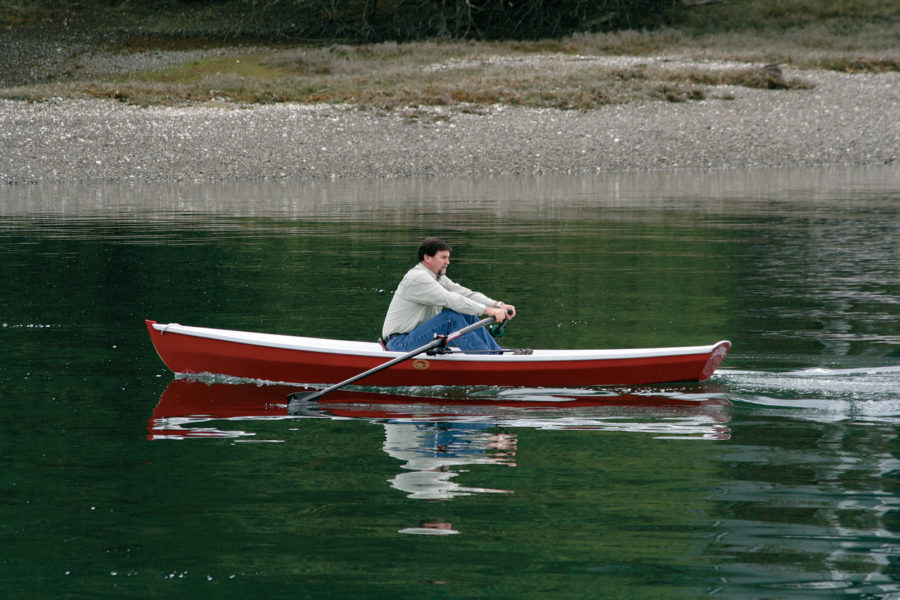
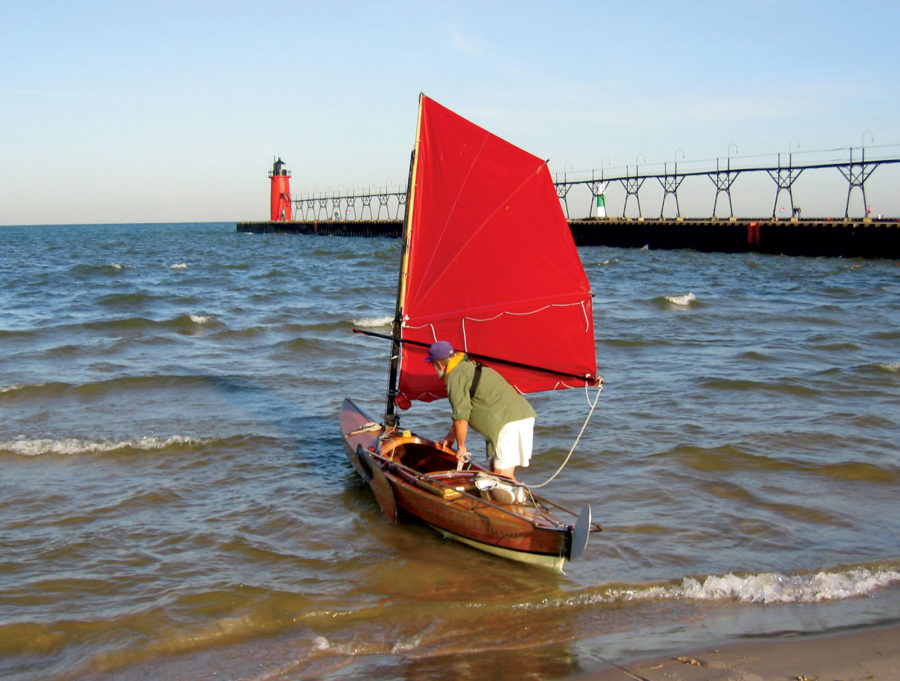

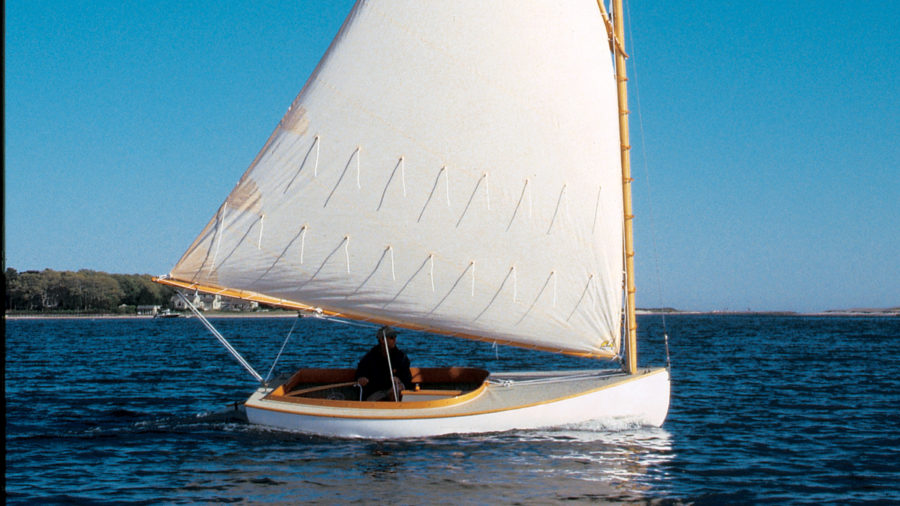
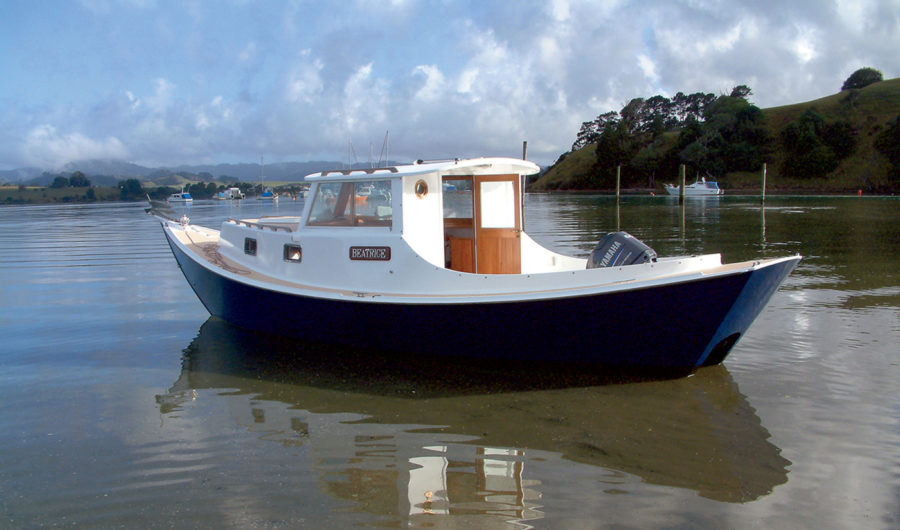
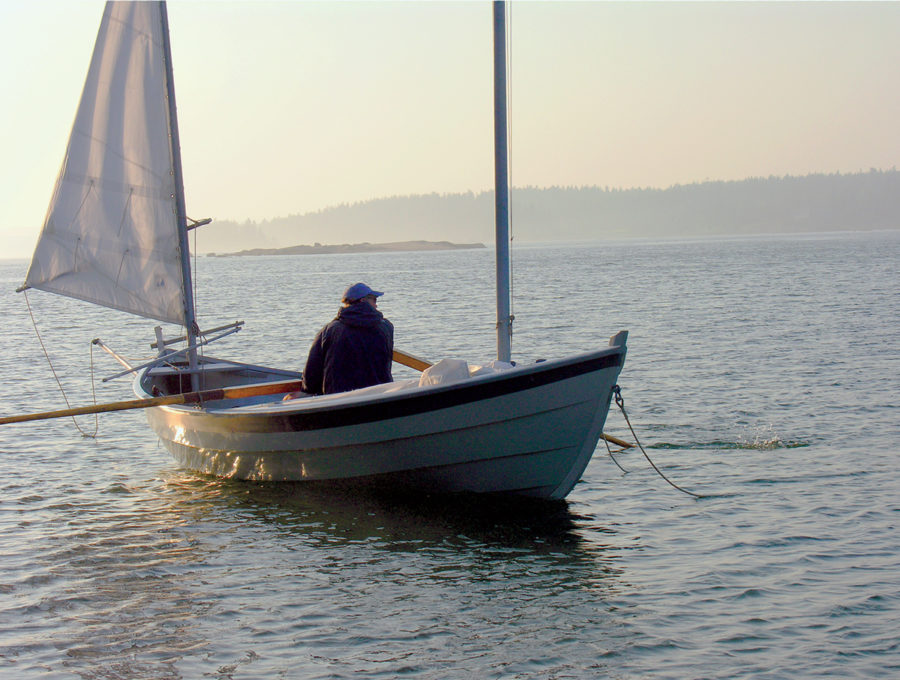
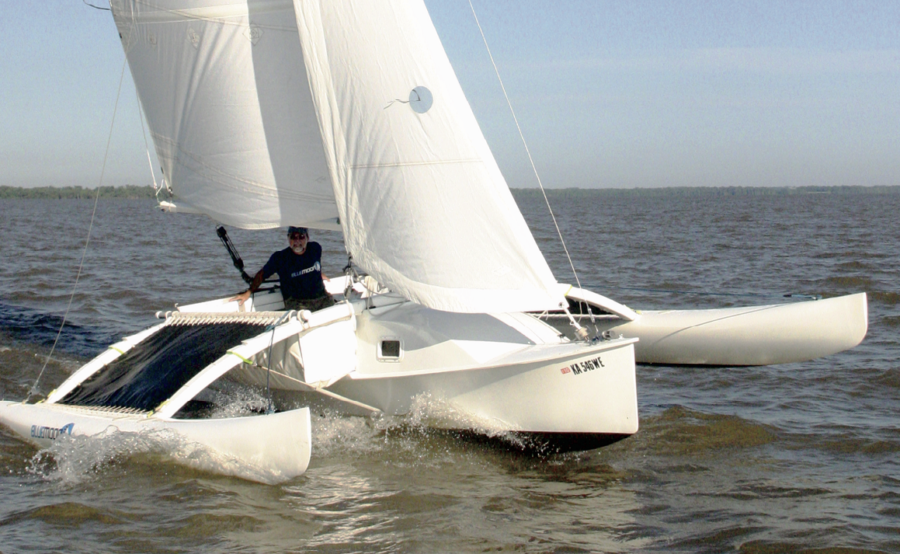
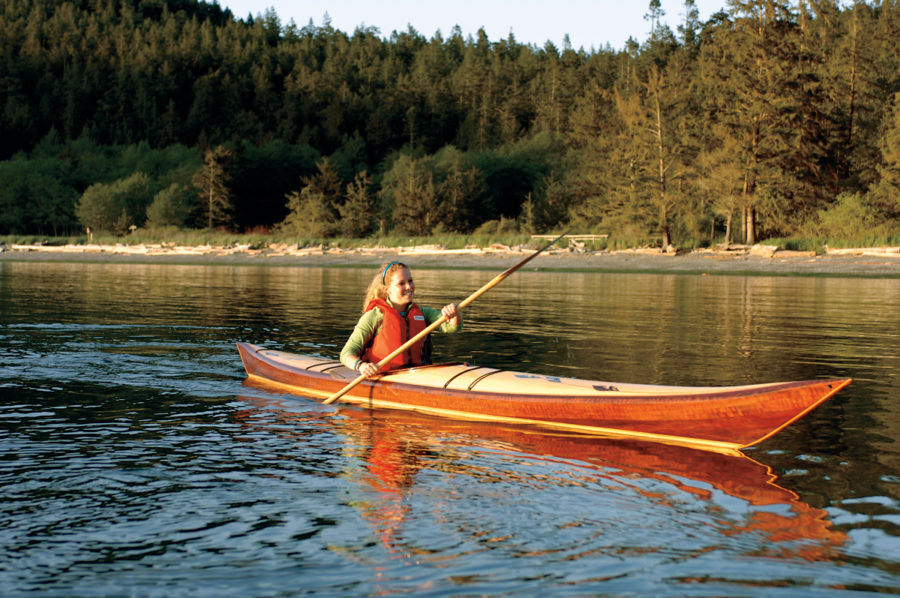
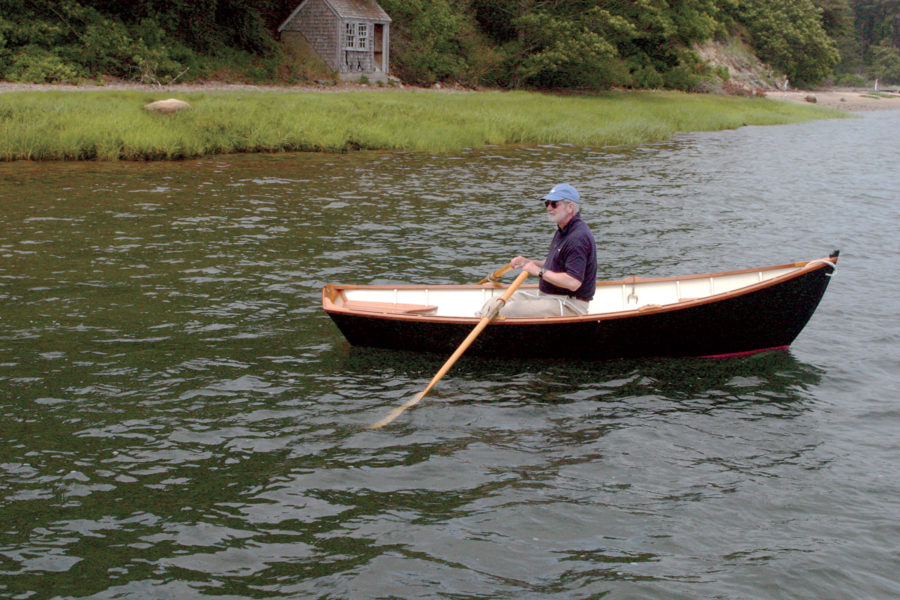
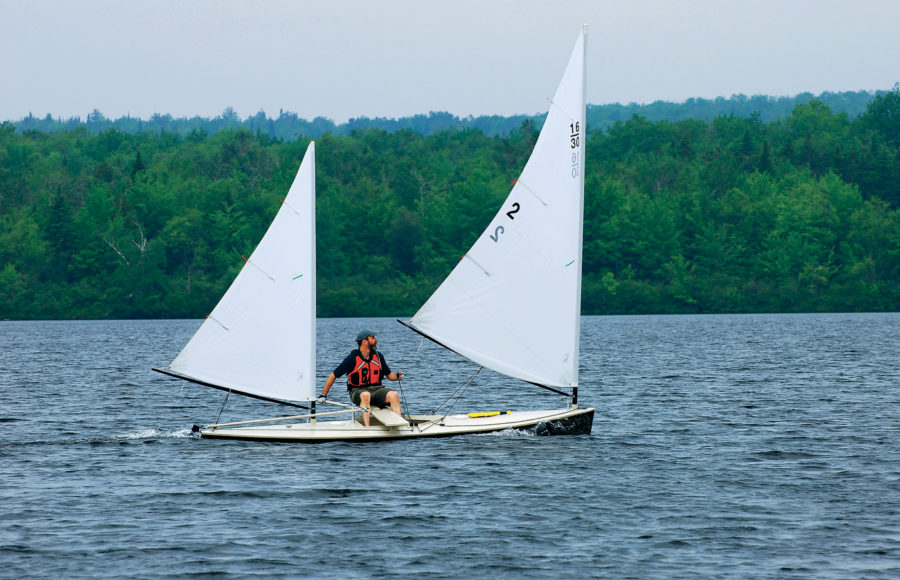
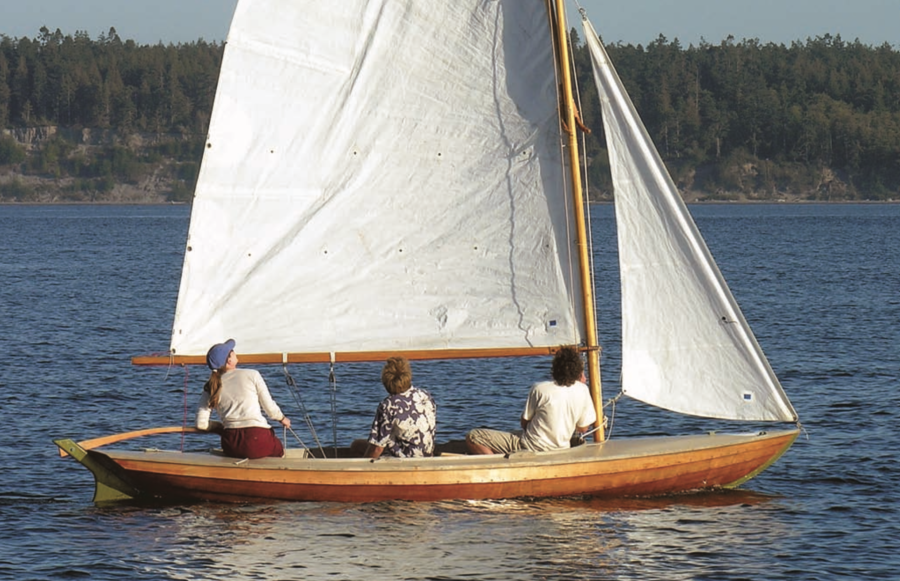
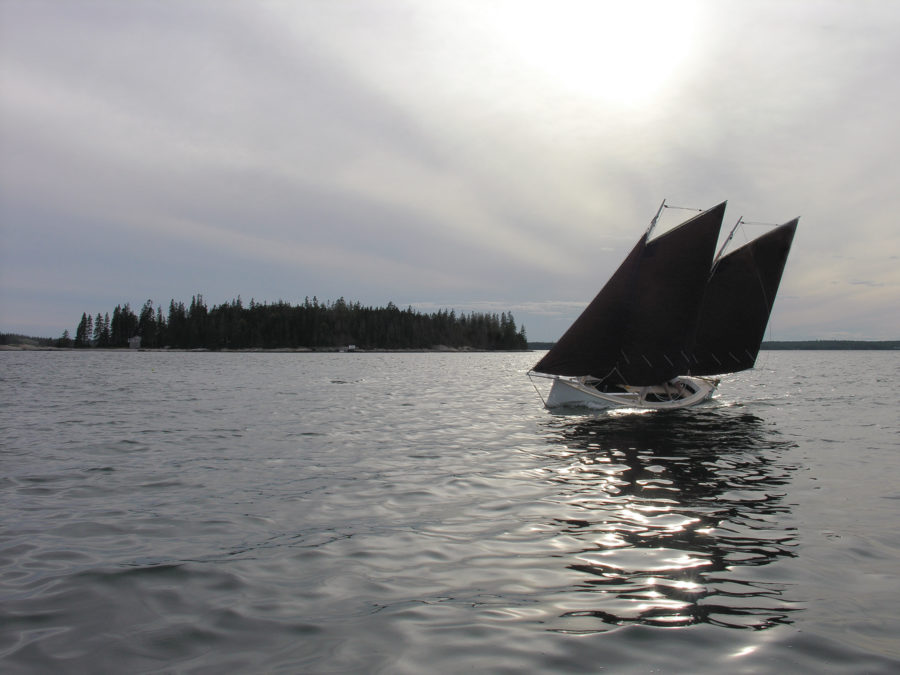
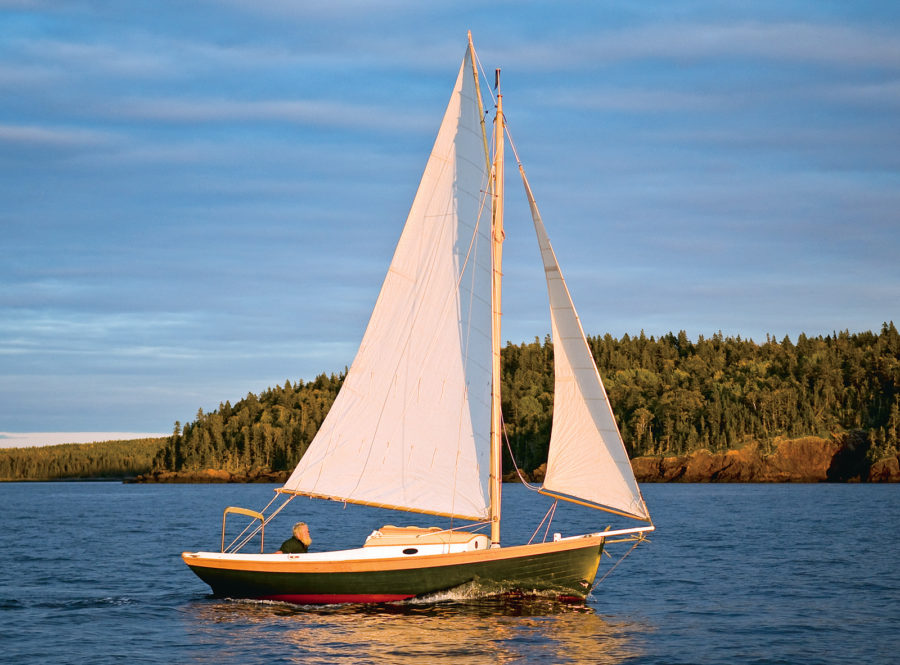
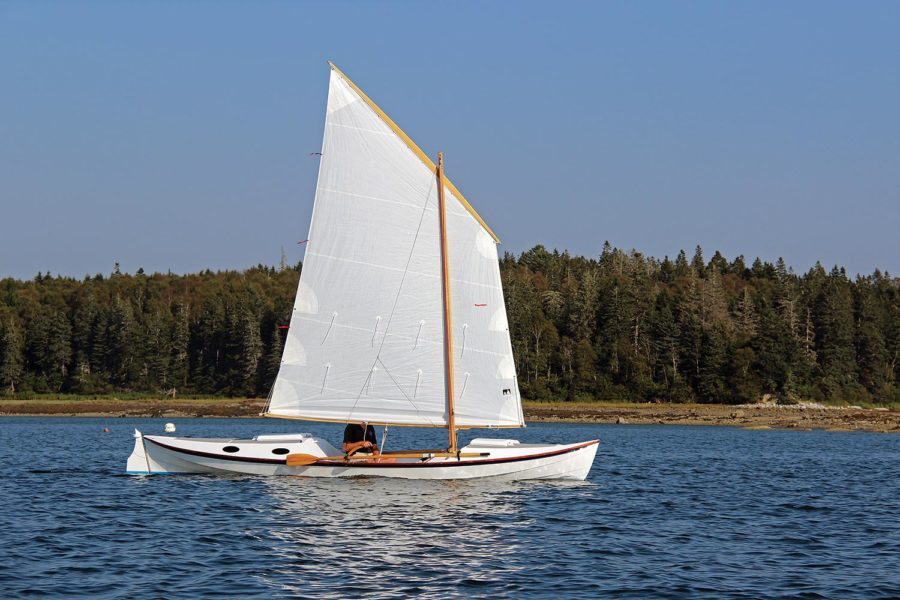
I loved the article. I’m just about to take off on my first adventure. Your article reinforces all the good advice I’ve been given.
I would like to see someone’s checklist. I’m sure I’ve forgotten things.
Also, would it be acceptable if I substituted scotch for the wine?
Dude! You’ve got this topic covered 7-ways till Sunday! Thanks for the great tips.
Thank you for this article. Always been a fan of beach cruising. We lovers of “small craft” need reminding, “your only limitation is your own imagination”!!
I like a GoreTex dry suit for kayaking—I wear it even in warm weather—and I have found it an excellent choice for launching and retrieving my Pelican at the ramp. Saves the awkward gymnastics on the trailer tongue, and the inevitable stepping into water deeper than the tops of the rubber boots. It would also be a way to make a drama-free anchoring situation. Wading, even swimming ashore or out to the boat solves a number of problems.
Oh yes! A wonderful article, beautifully written. But really well-illustrated too, with beautiful photographs. I have been puzzling over how to store my anchor tackle onboard and I was completely confused when I read “I flake my long rode in a self-draining plastic laundry basket, making for a non-fouling easy-in/easy-out system.” But the haul-out photos made it all clear. I would NEVER have thought to use a laundry basket for this purpose. Thanks for the tip! And everything else in the article!
Wonderful article. I come from a kayaker background but am fascinated with with the idea of open-dinghy beach cruising. Would love to try it. How do you keep all this stuff from shifting in a blow. Maybe dry bags under the seats held in place with compression straps? Extra flotation compartments that could double for gear storage? Then there’s the elephant question, what happens if… swamping or knockdown?
This is so great–everyone should try it. My first time I trailered my Sea Pearl to a location I had never been, for two nights. My recommendation, if either you or your guest are hesitant about sail camping, would be to start off slowly and then ease up (whoops, that’s that other website!).
Just go out for one overnight. You don’t want to find out on night one of a 5 day adventure that you really should have brought …
Keep meals simple. I would suggest setting sail after lunch and bringing snacks for dinner and breakfast. No cooking. You want time to learn to sail with the boat loaded, getting camp made and broken, and taking care of the boat. Even better would be a camping location where you could order food in.
Pick a sailing location that you are either really familiar with or is very simple. Knowing where you are going and what the anchorage and camping conditions are will take a lot off your mind and help you prepare your gear.
Leave enough daylight for making camp, eating, and enjoying the evening. Some things were way easier than I thought, other things that I thought would be simple (and had done many times backpacking or car camping) took much longer than anticipated. Leave plenty of time so you don’t have to hurry-worry.
For those camp cruisers; check the Roger Barnes channel. I personally consider him to be the expert on camp cruising.
The float for the clothesline makes all the difference. I used a fender and the borrowed single pulley block from my boom, because that’s what I had when I decided to give it a try. I usually shackle one end to the stern and tie the other to the bow.
Remember to have good, thick sole shoes when wading ashore. Oysters show no mercy, a lesson re-learned the hard way a couple weeks ago while small-boat cruising in Cape Lookout area.